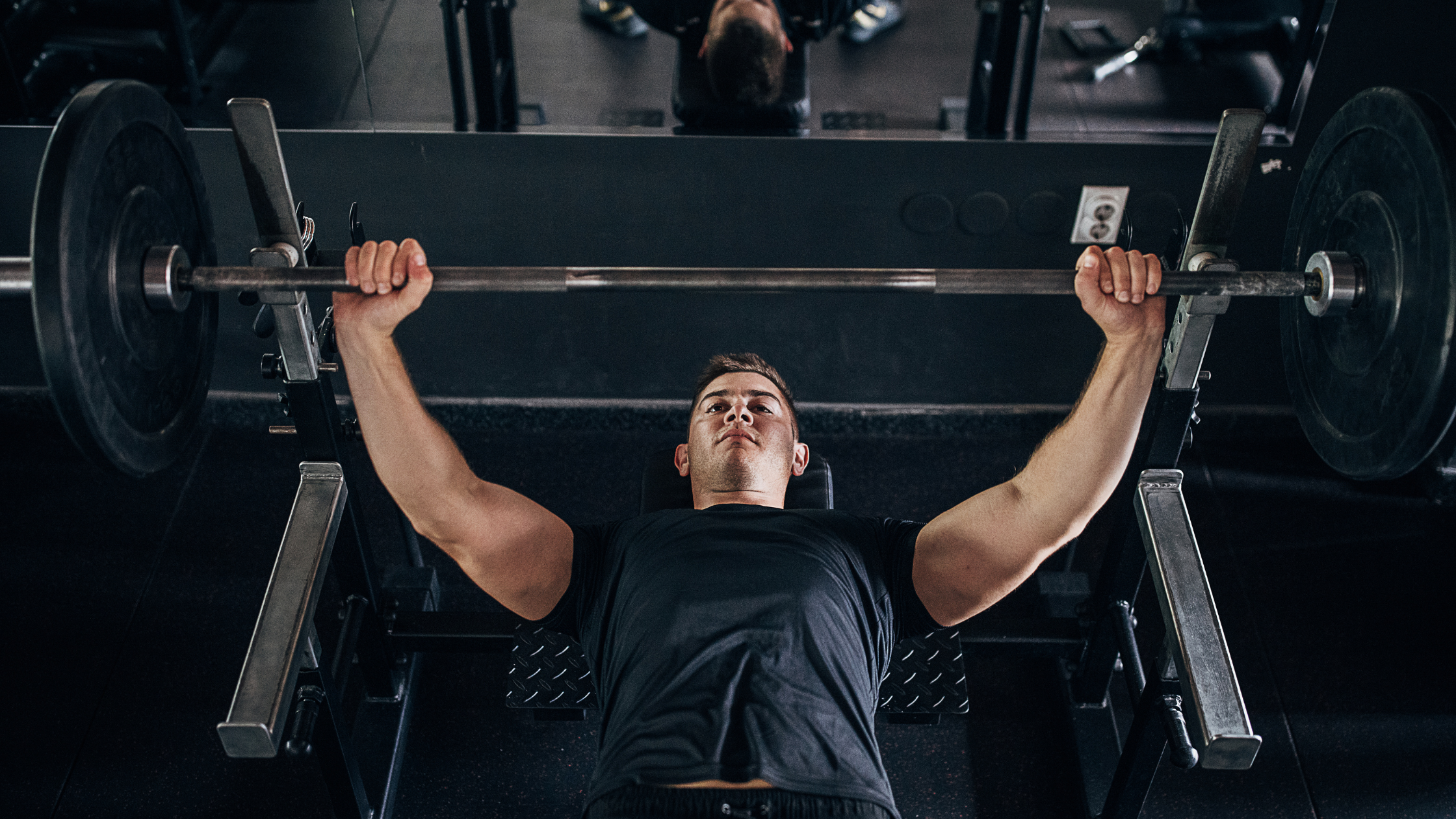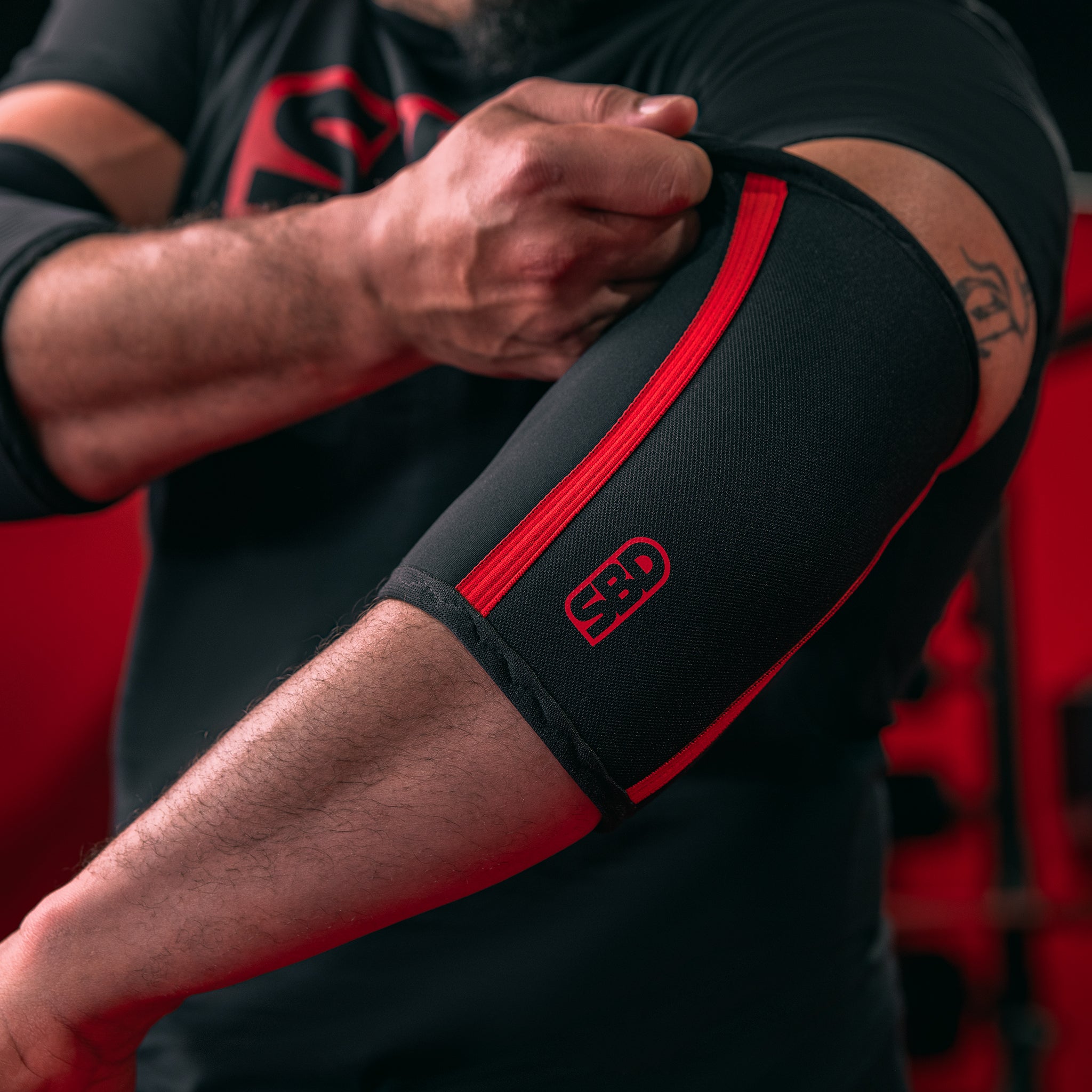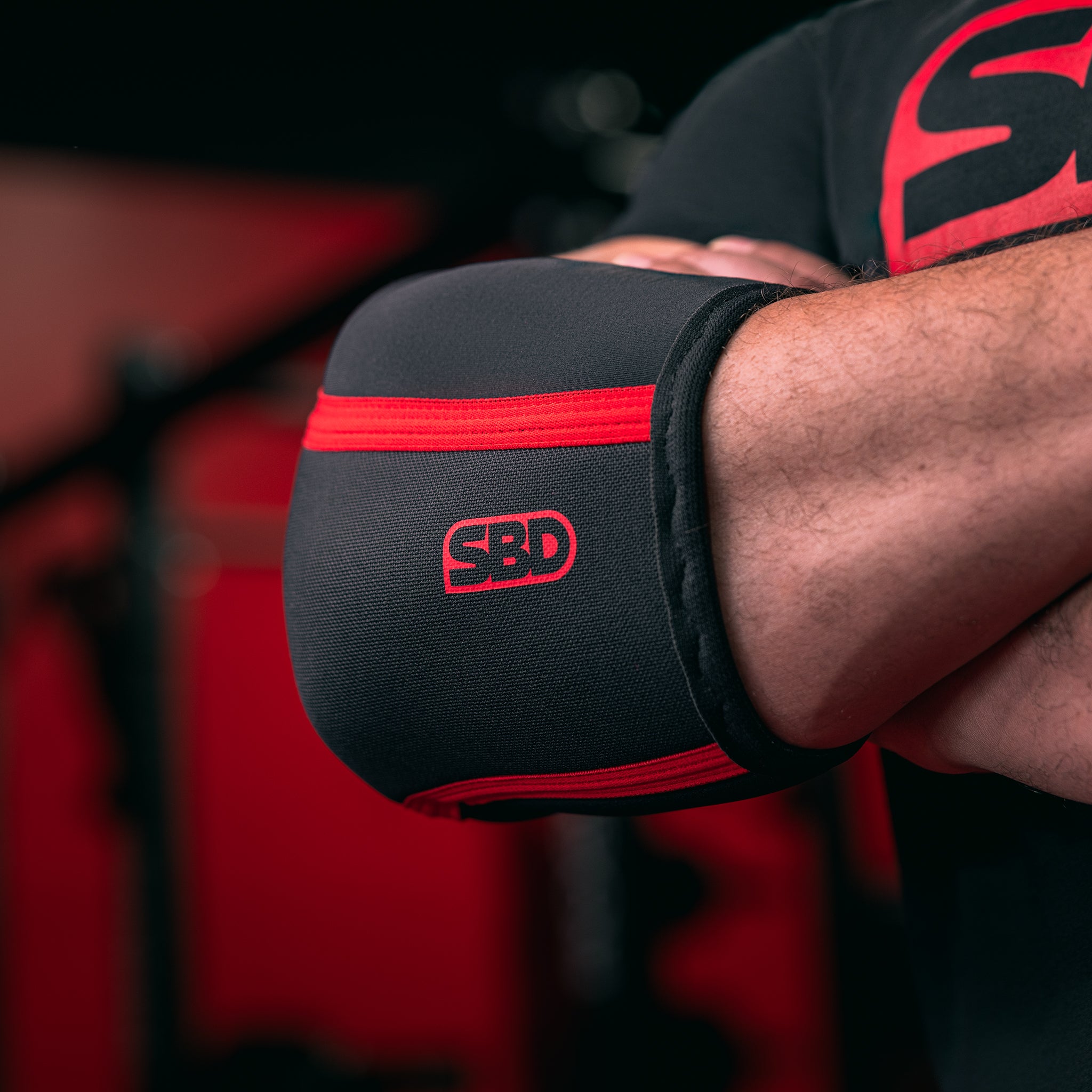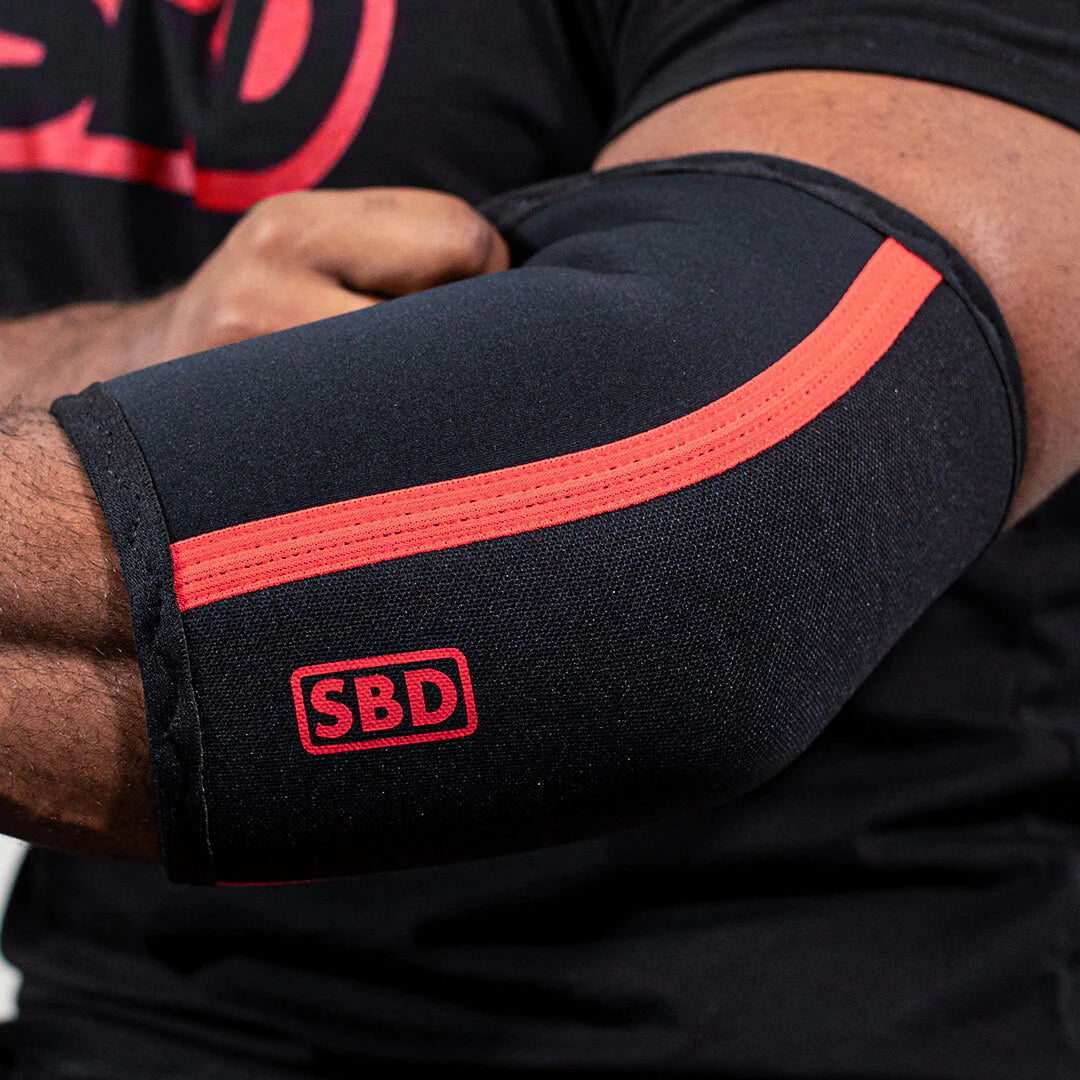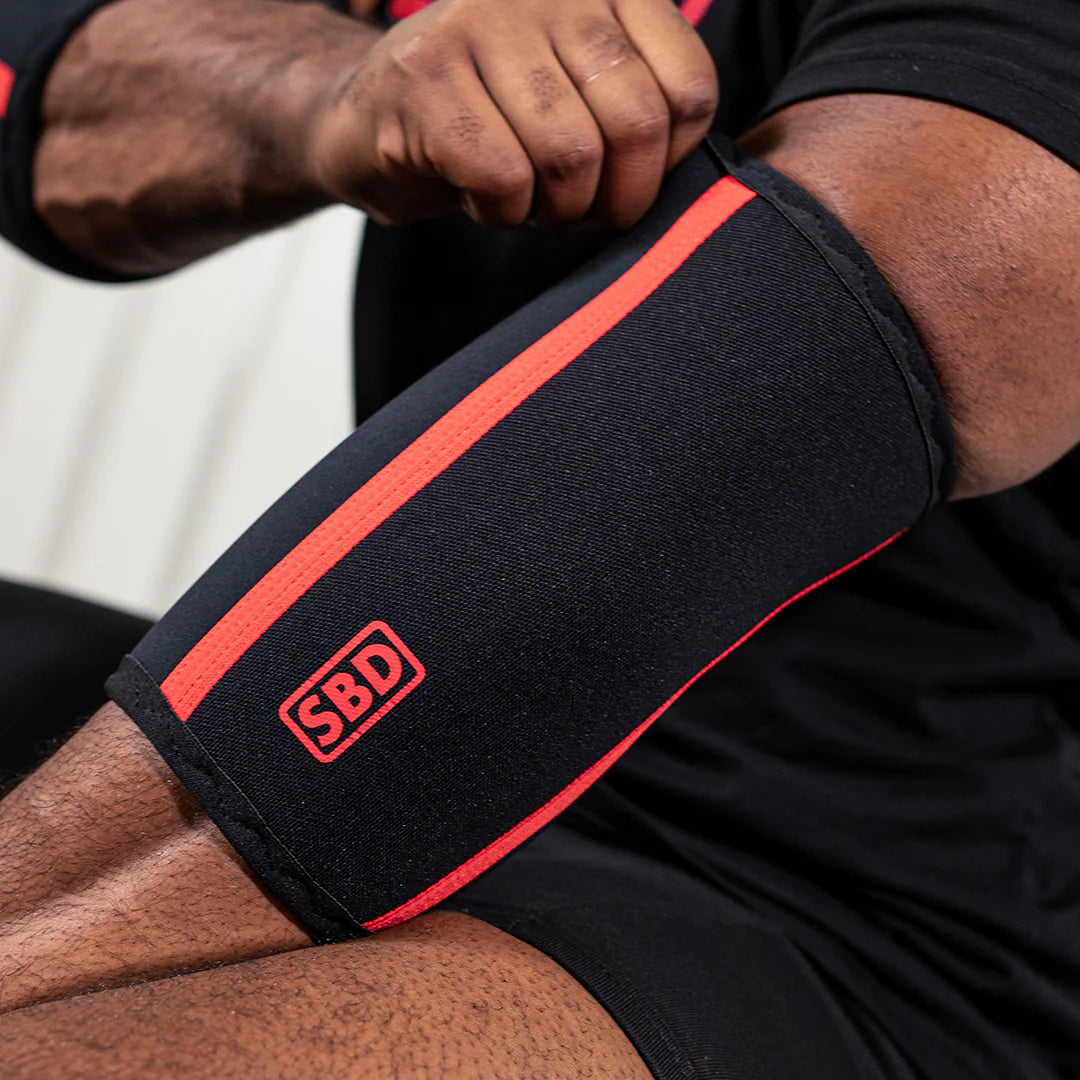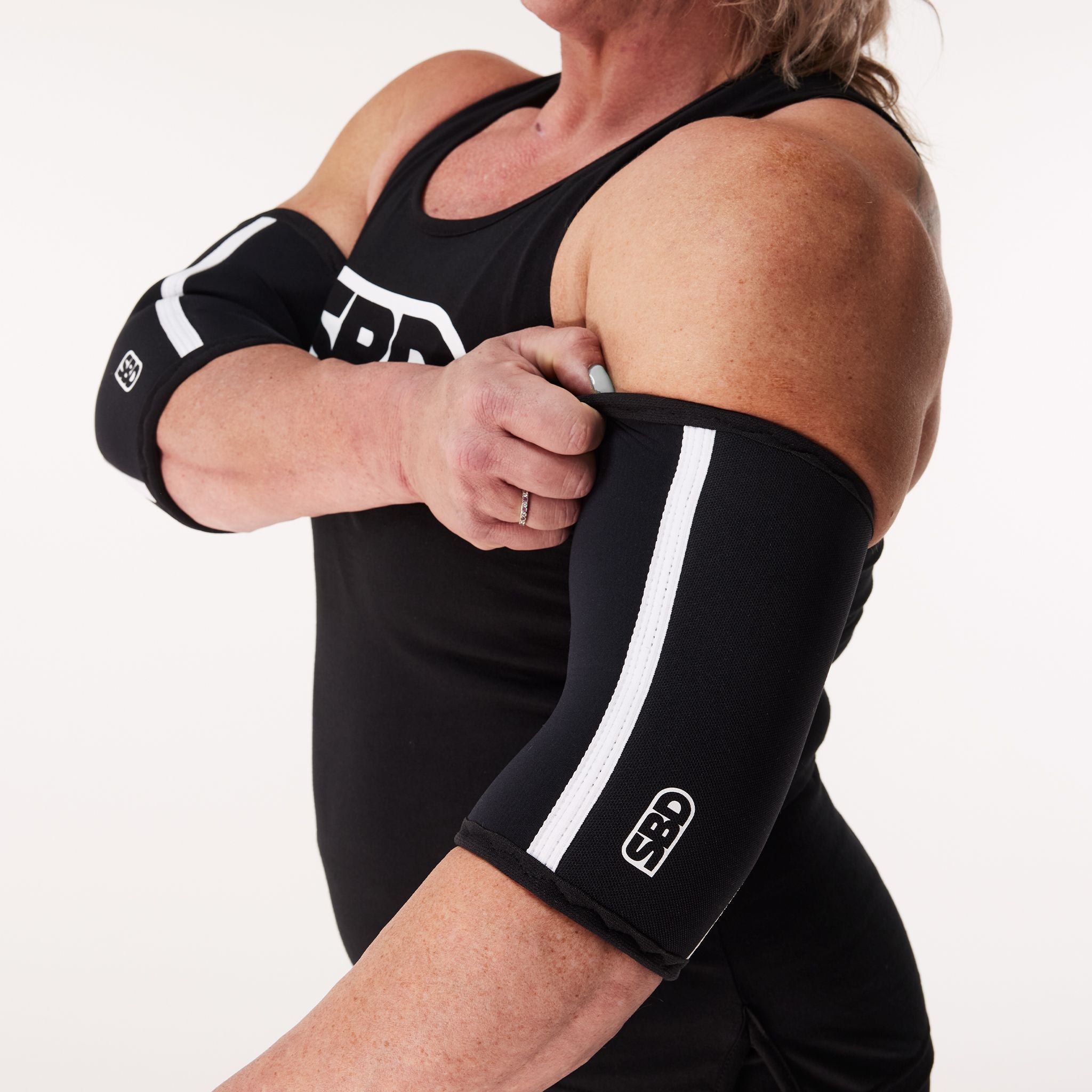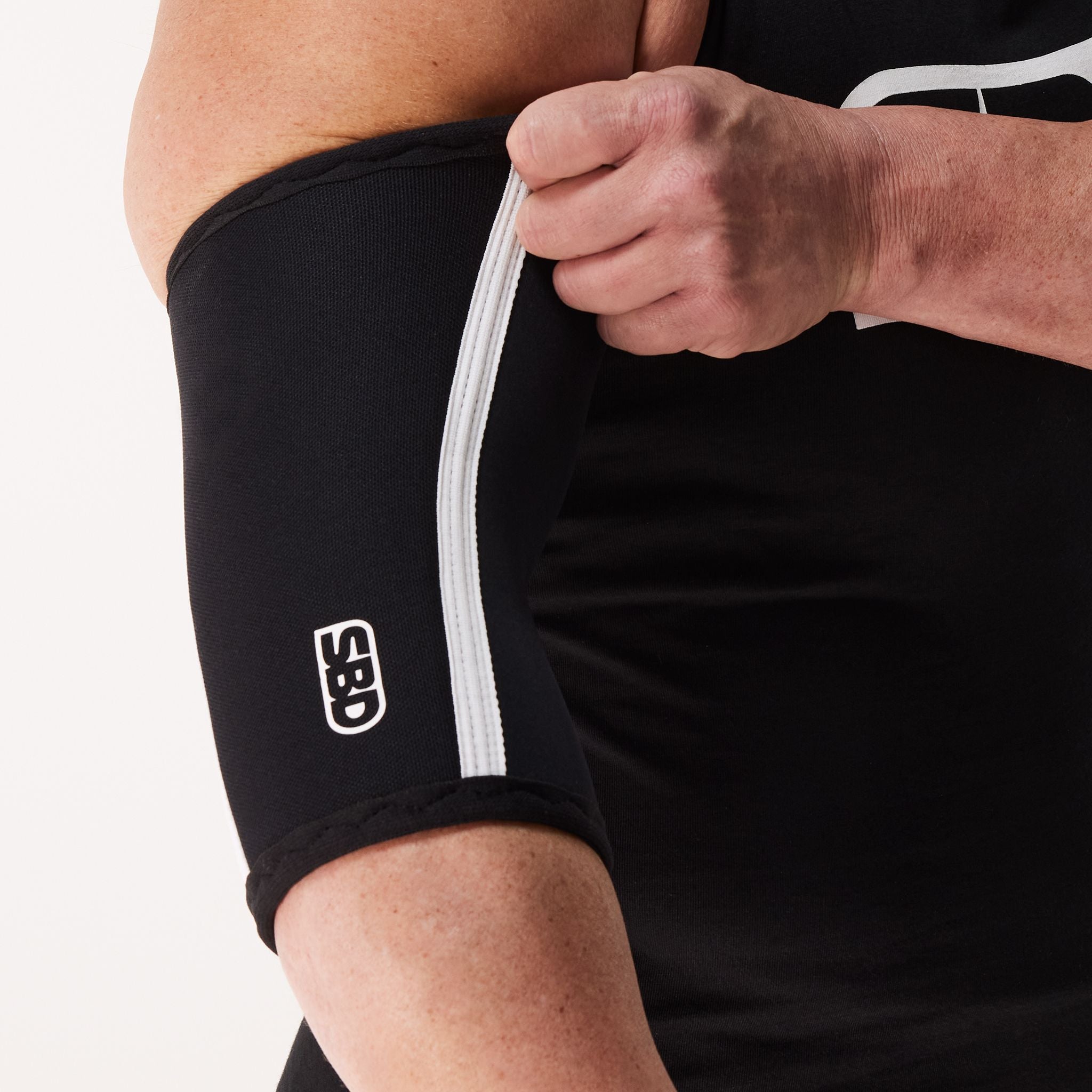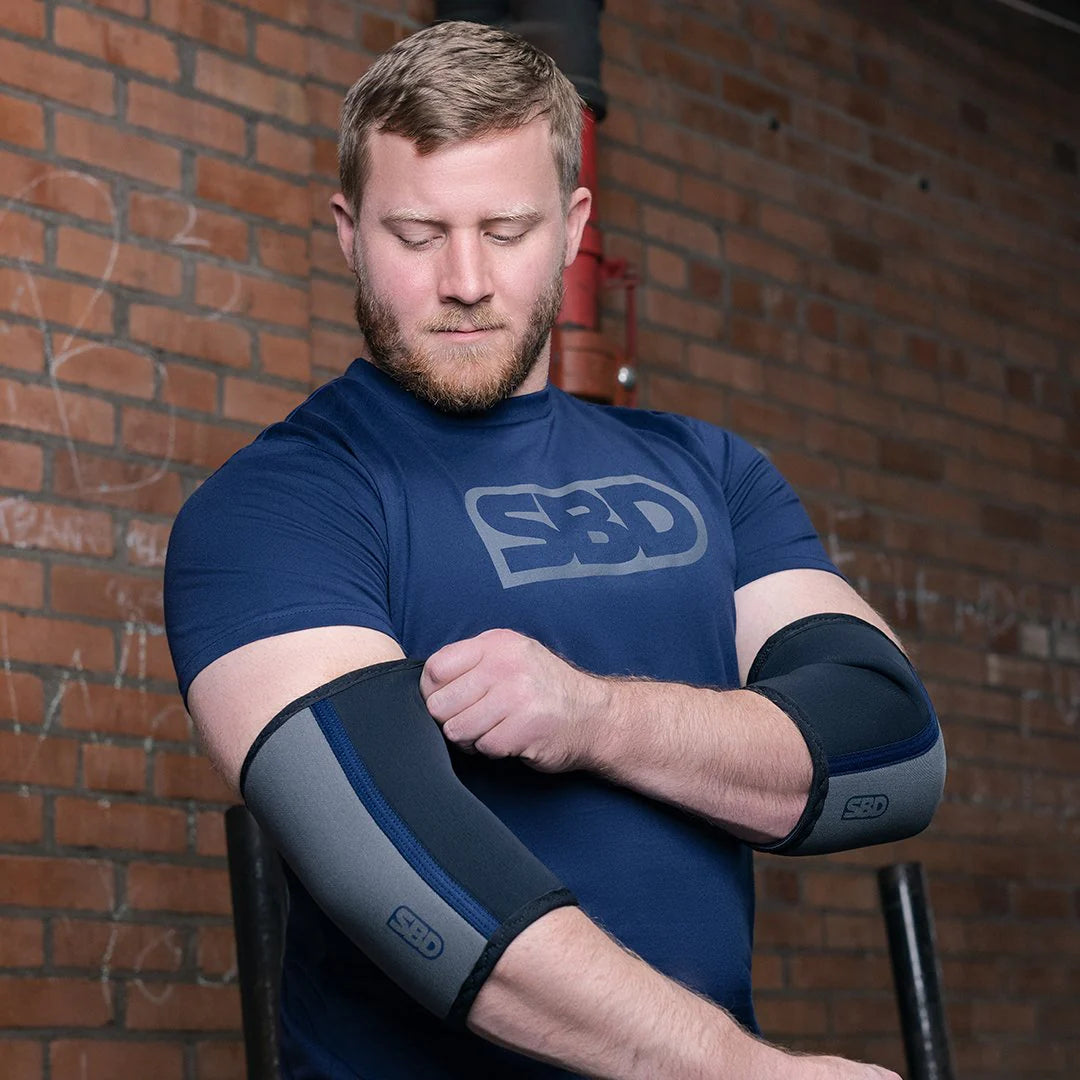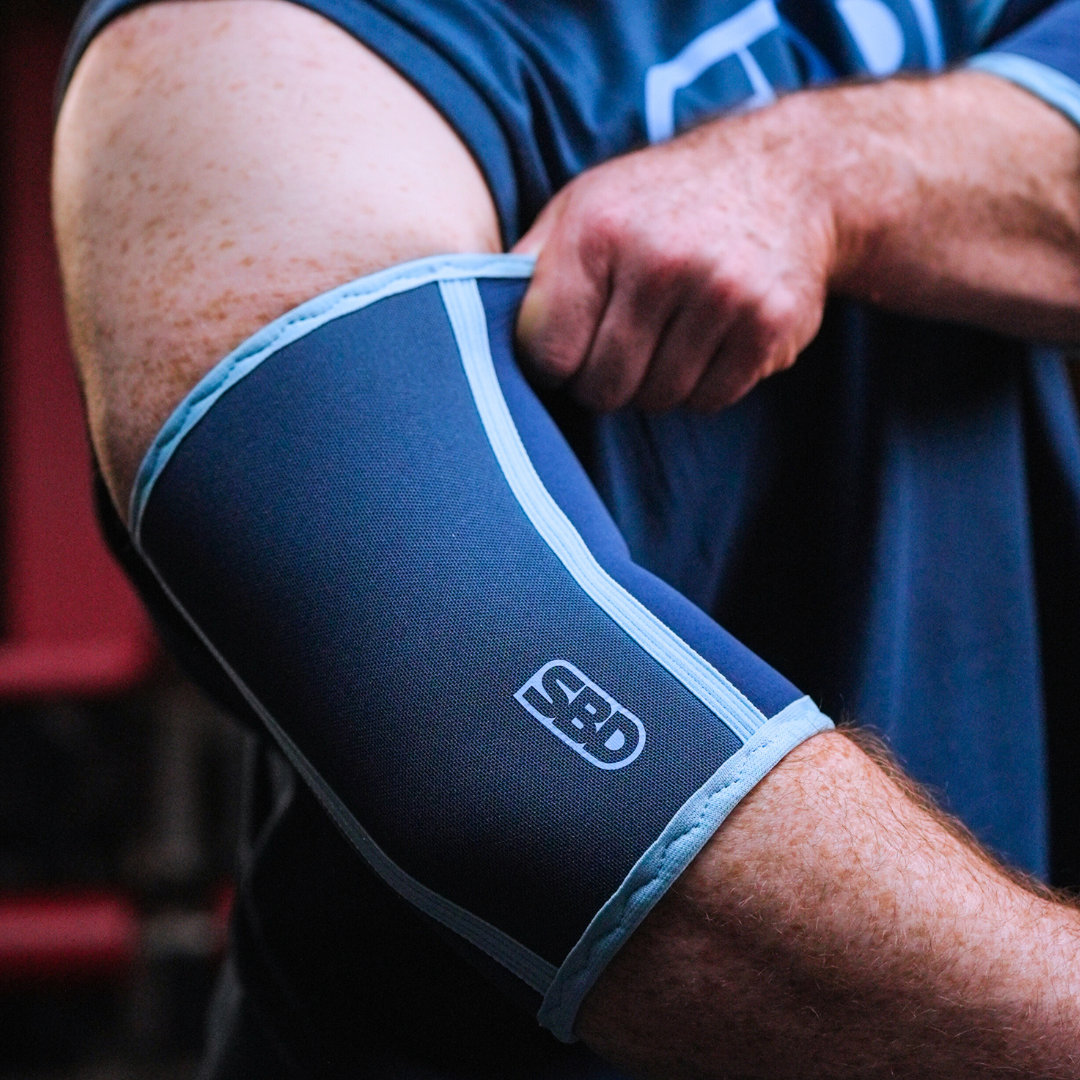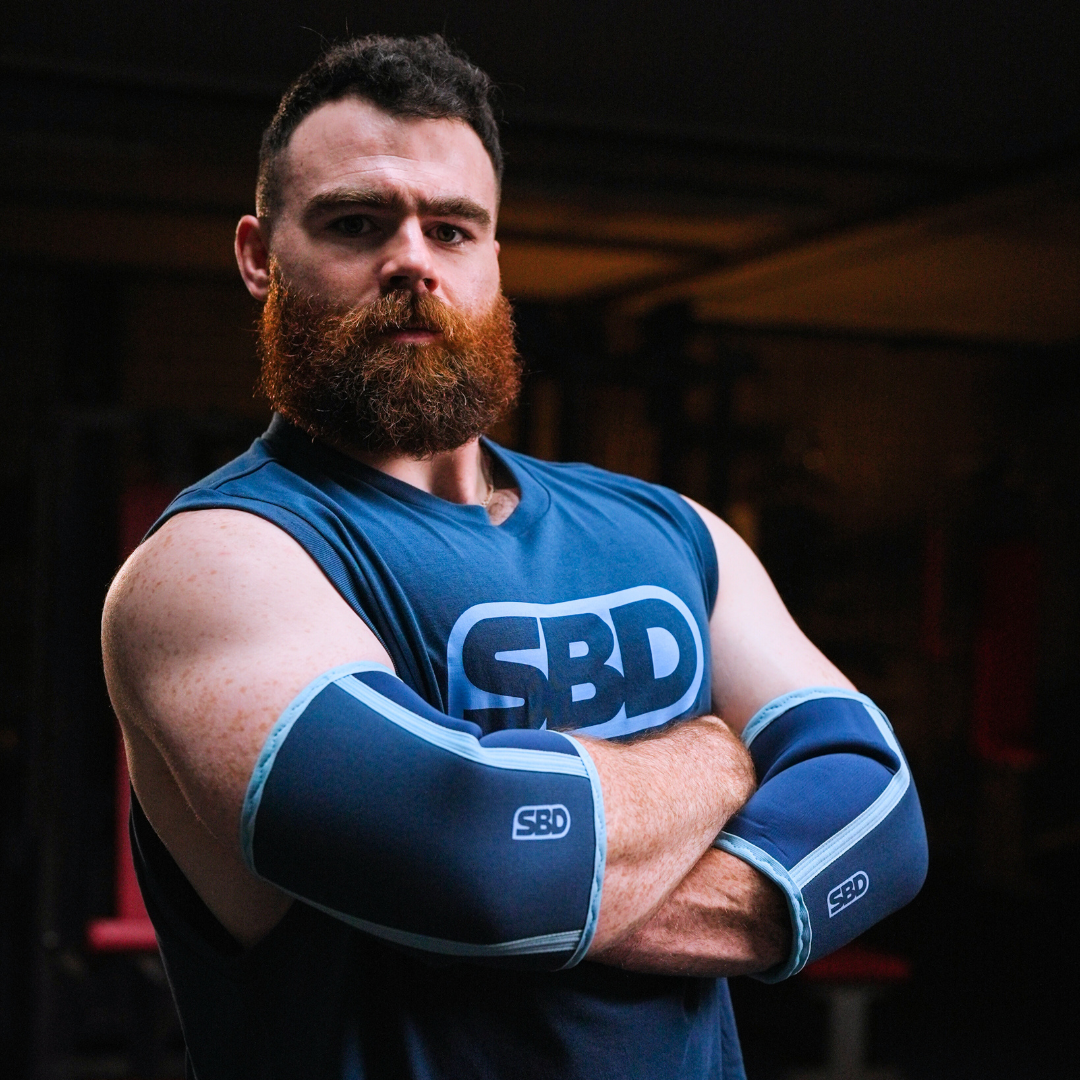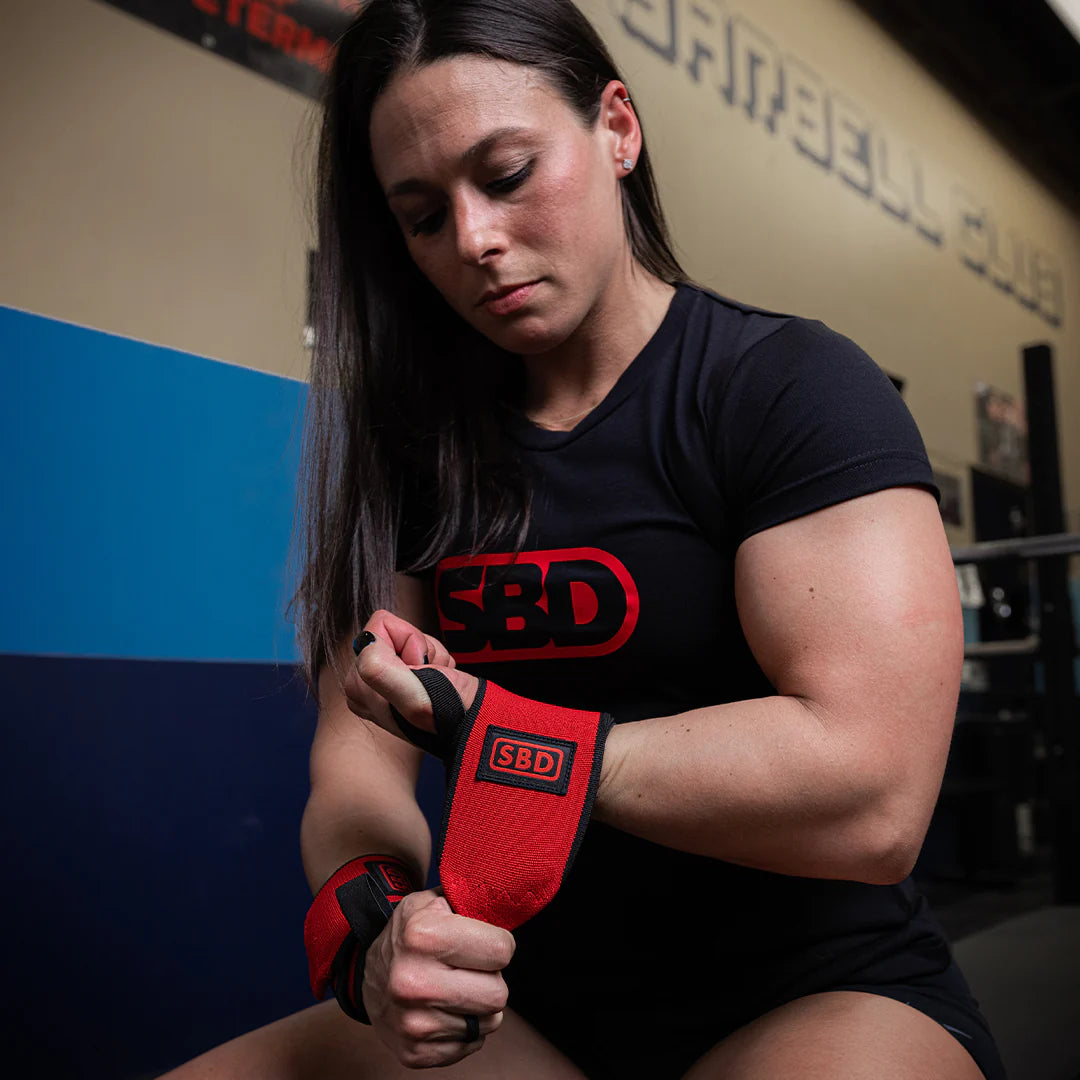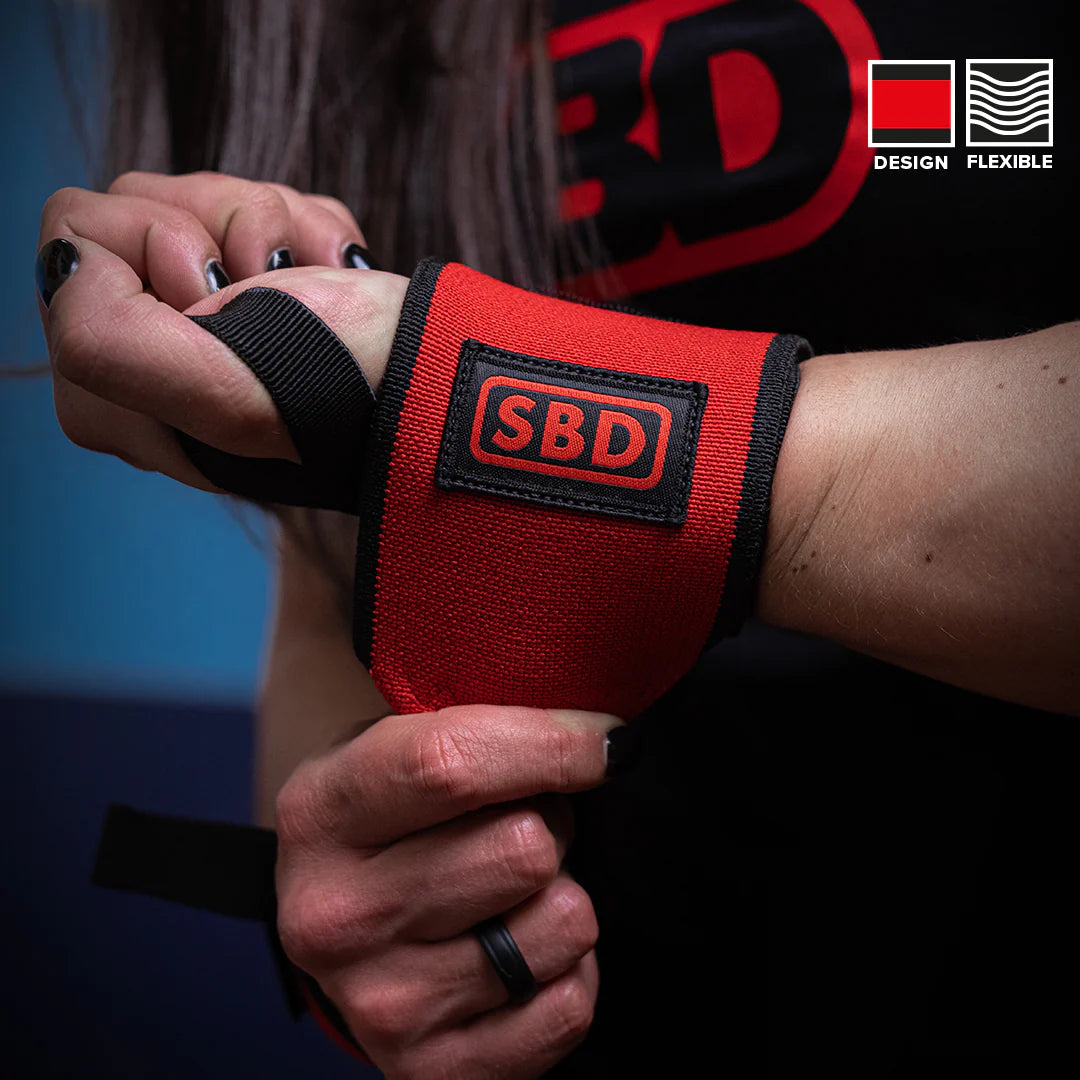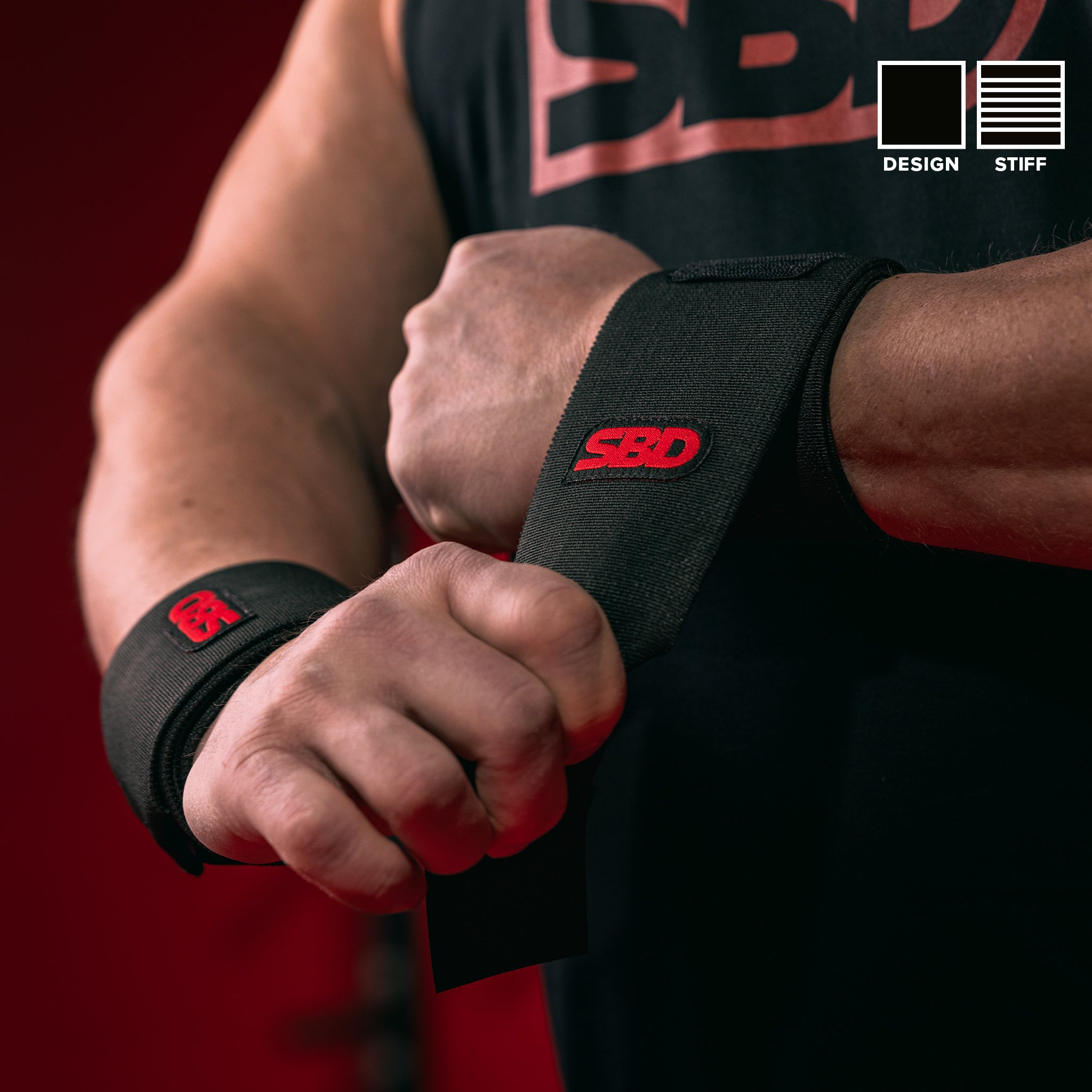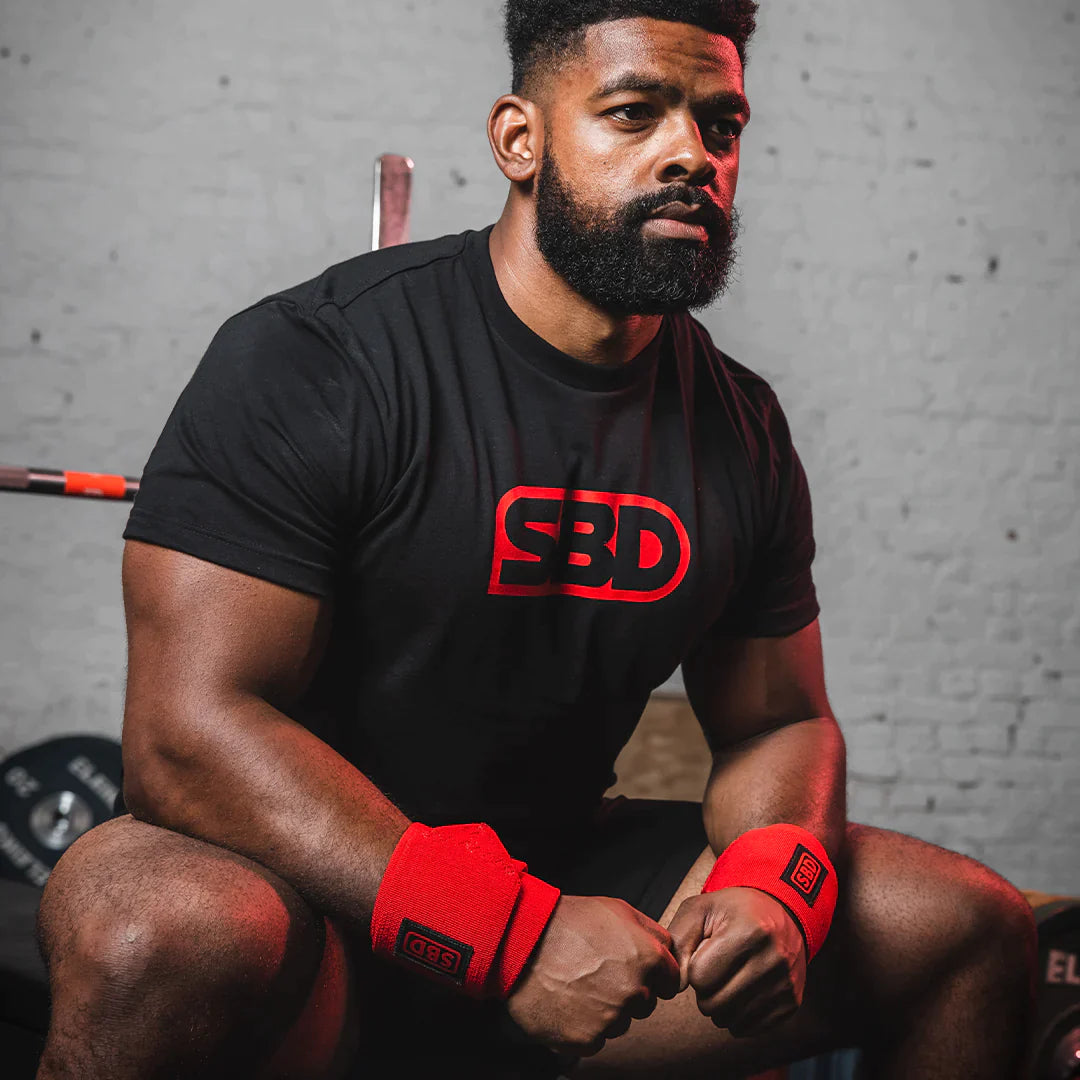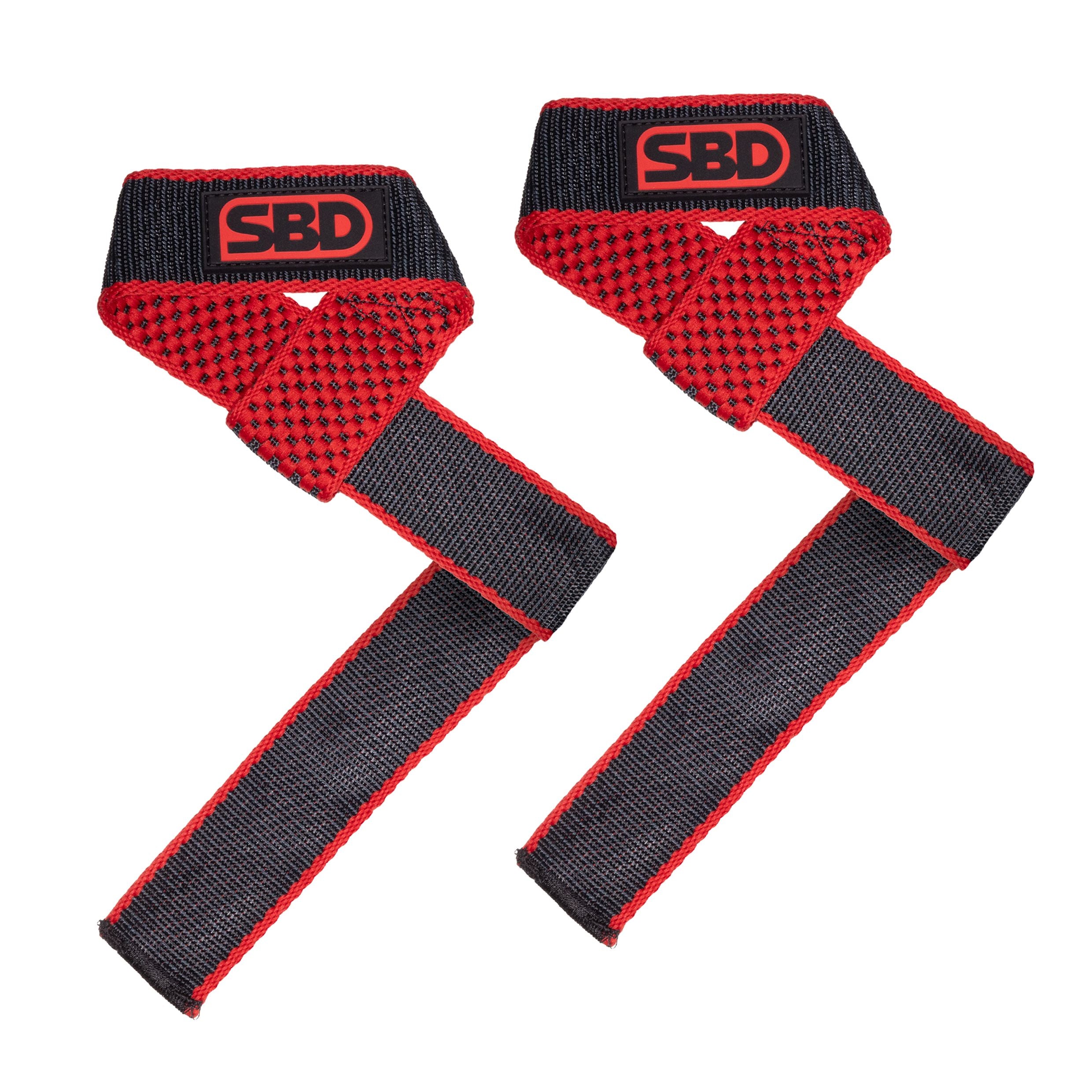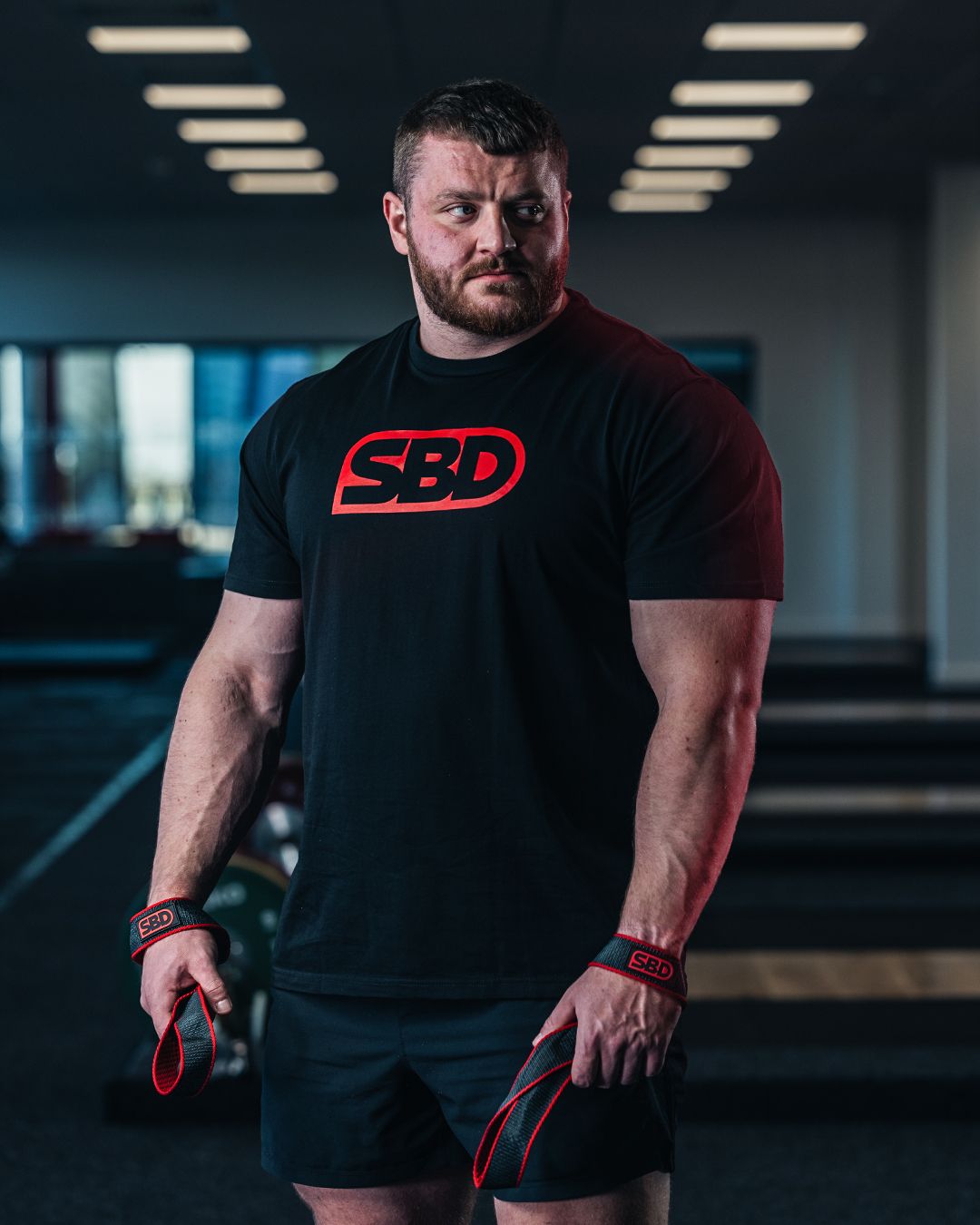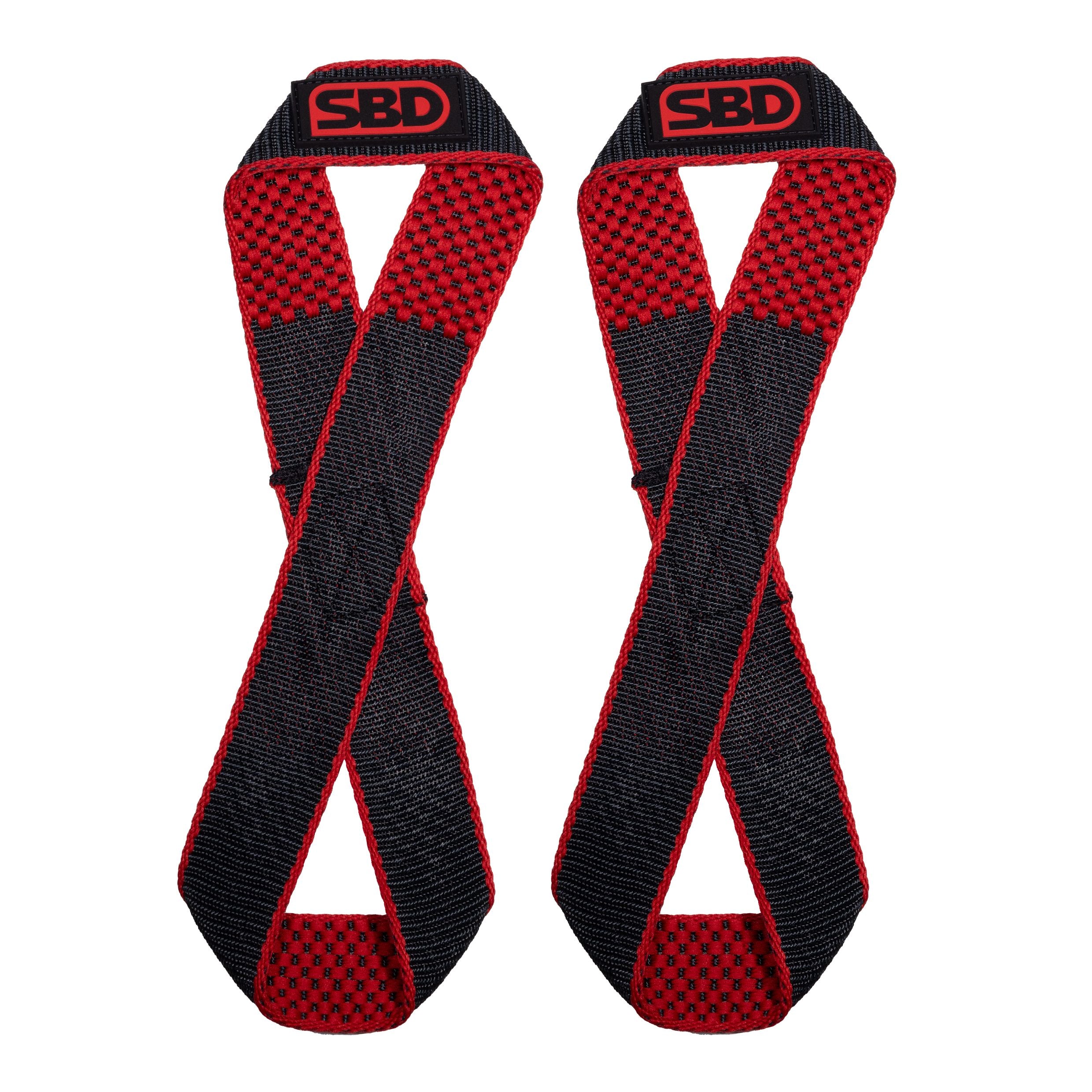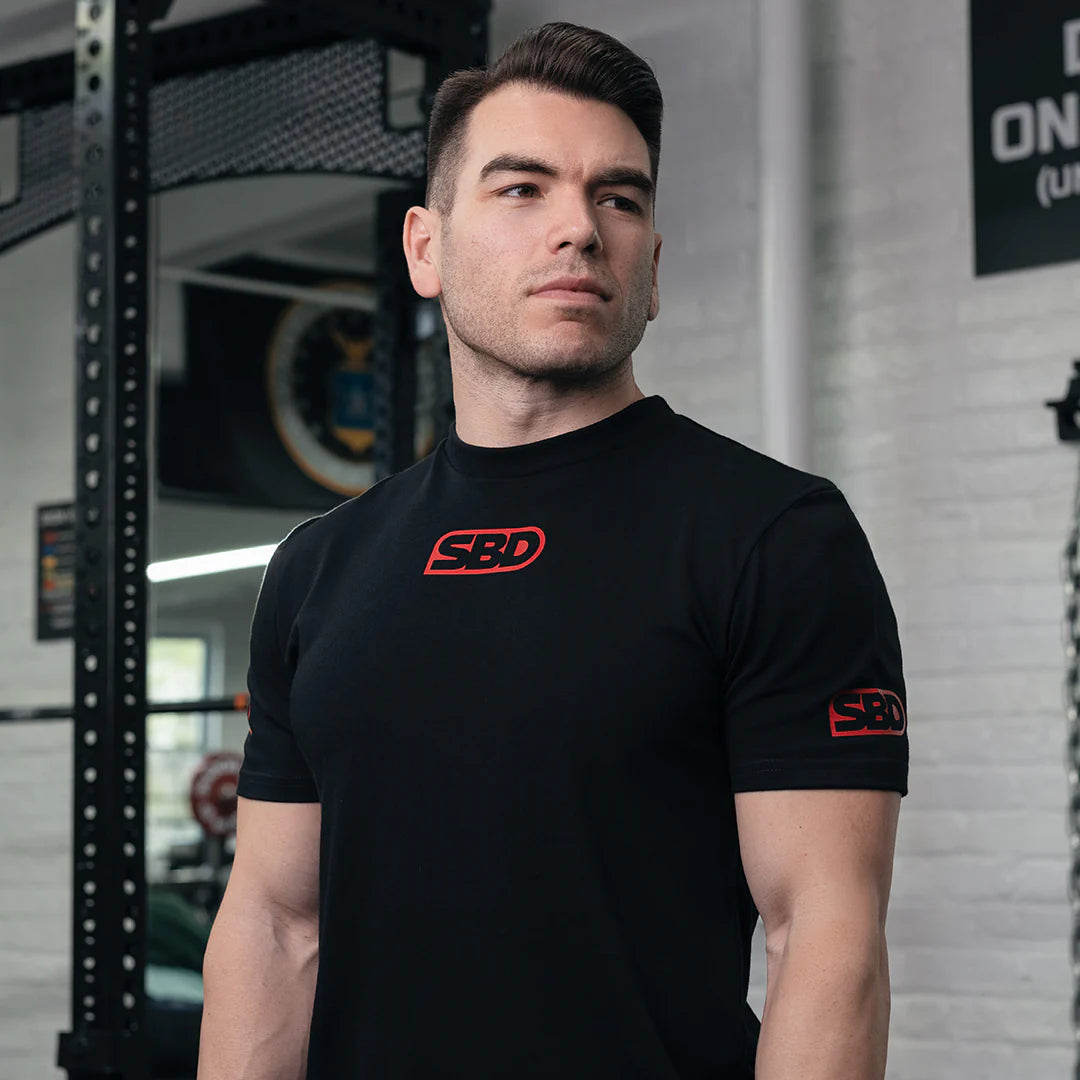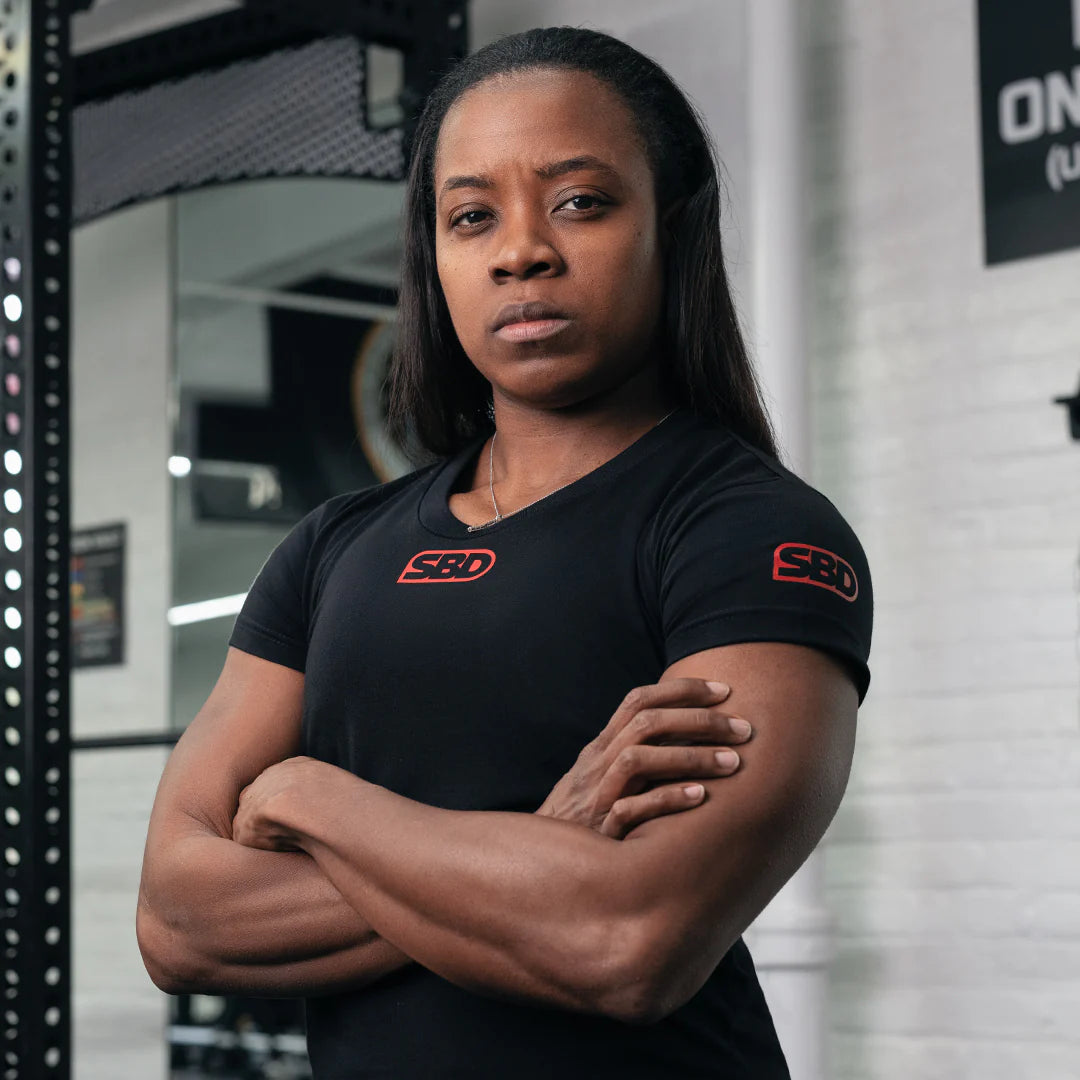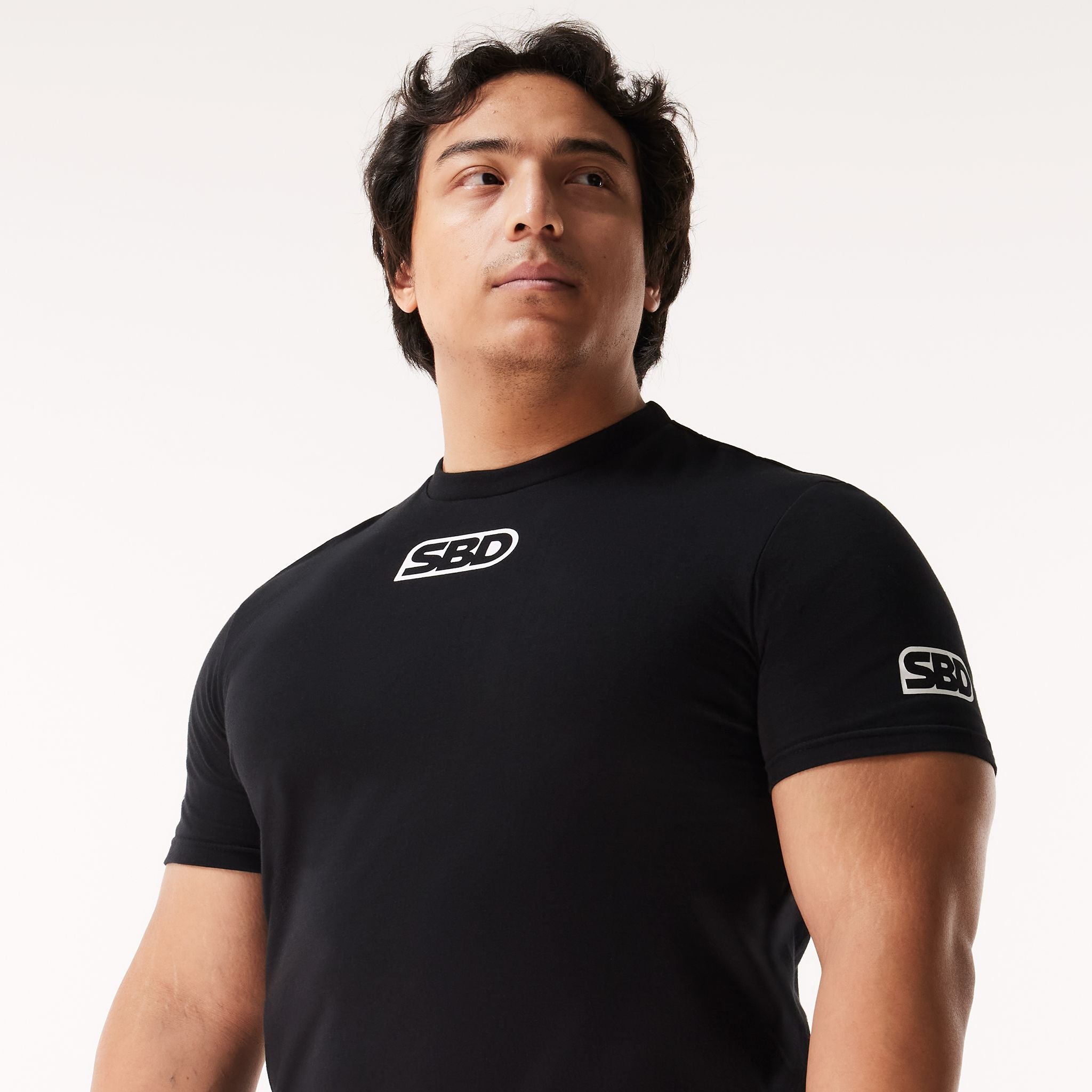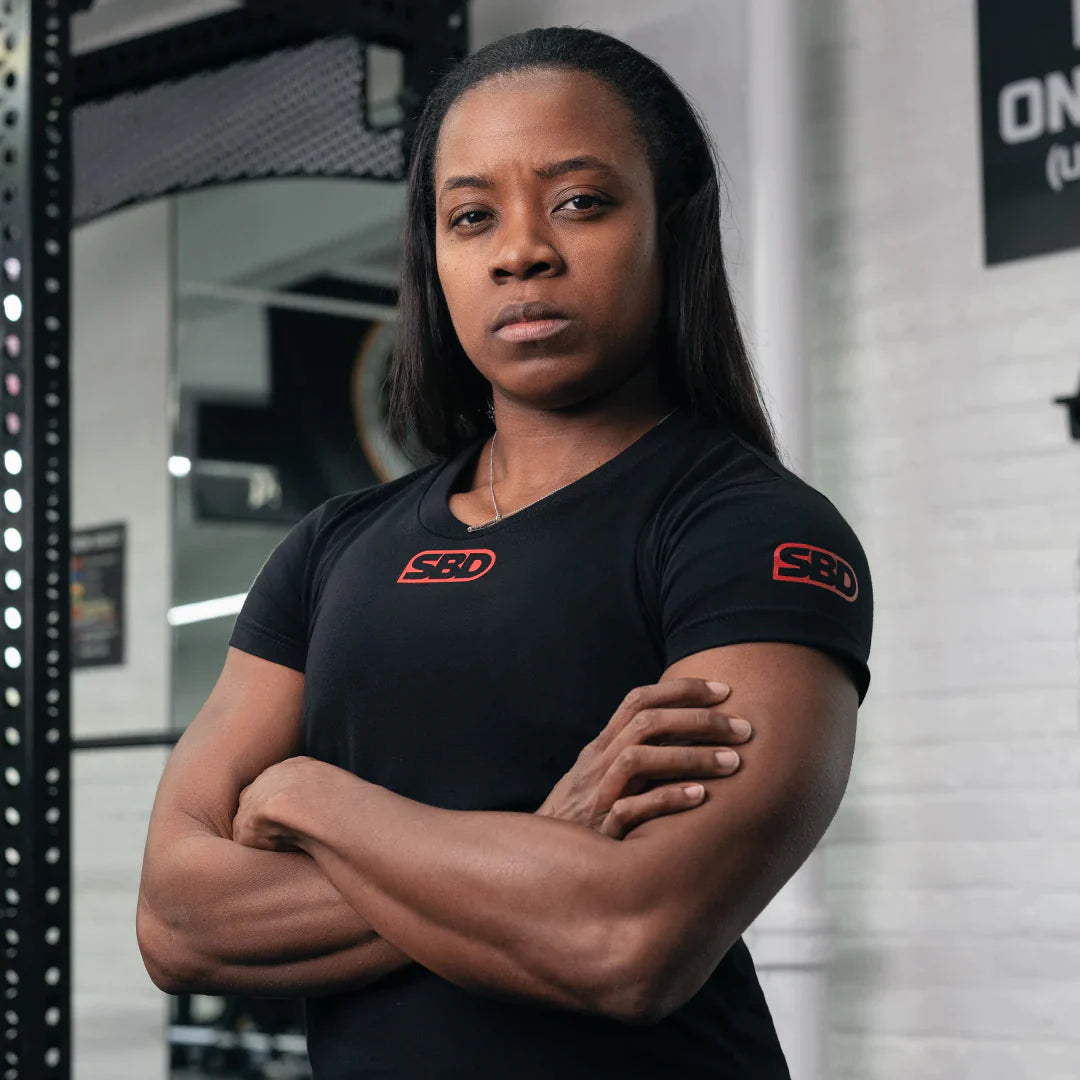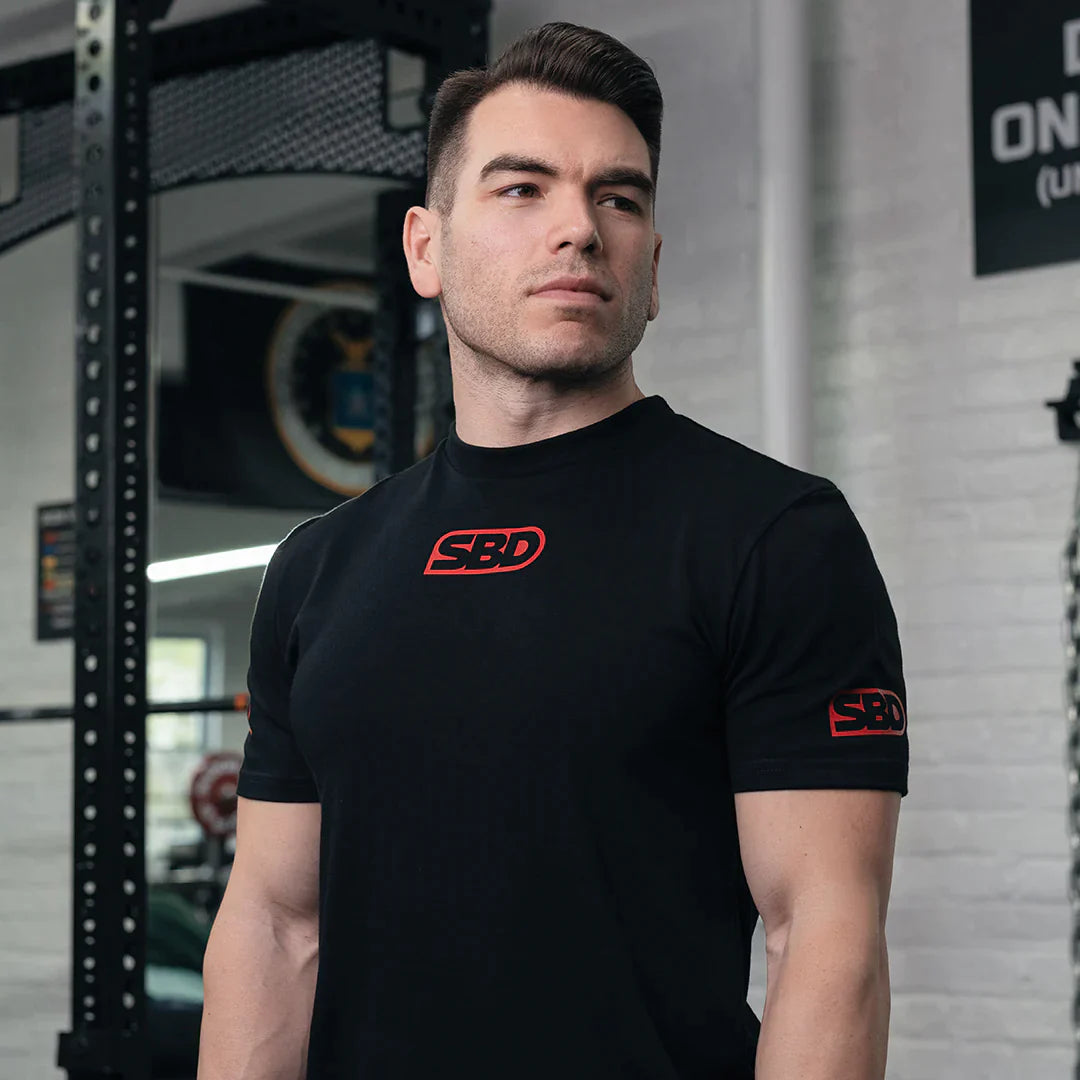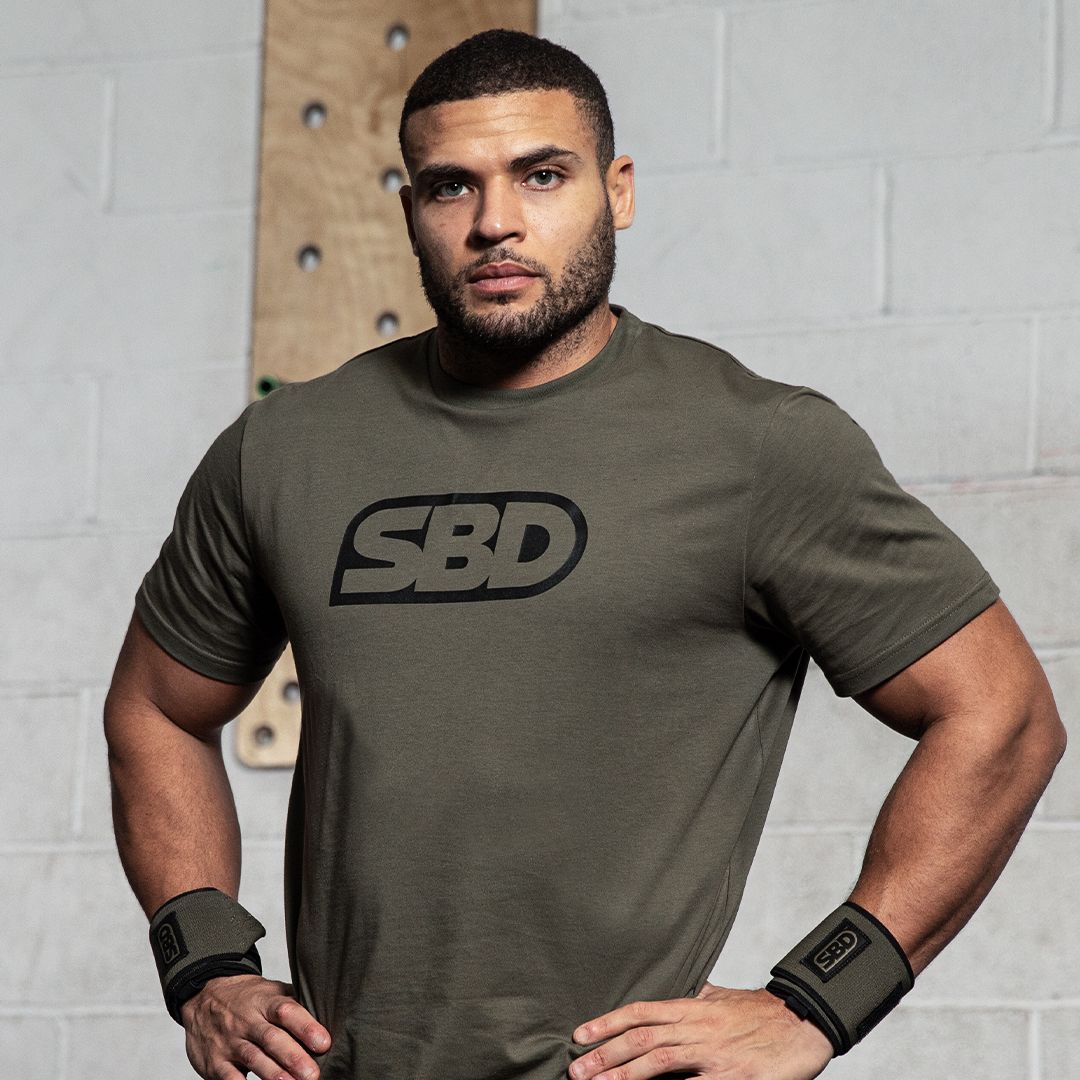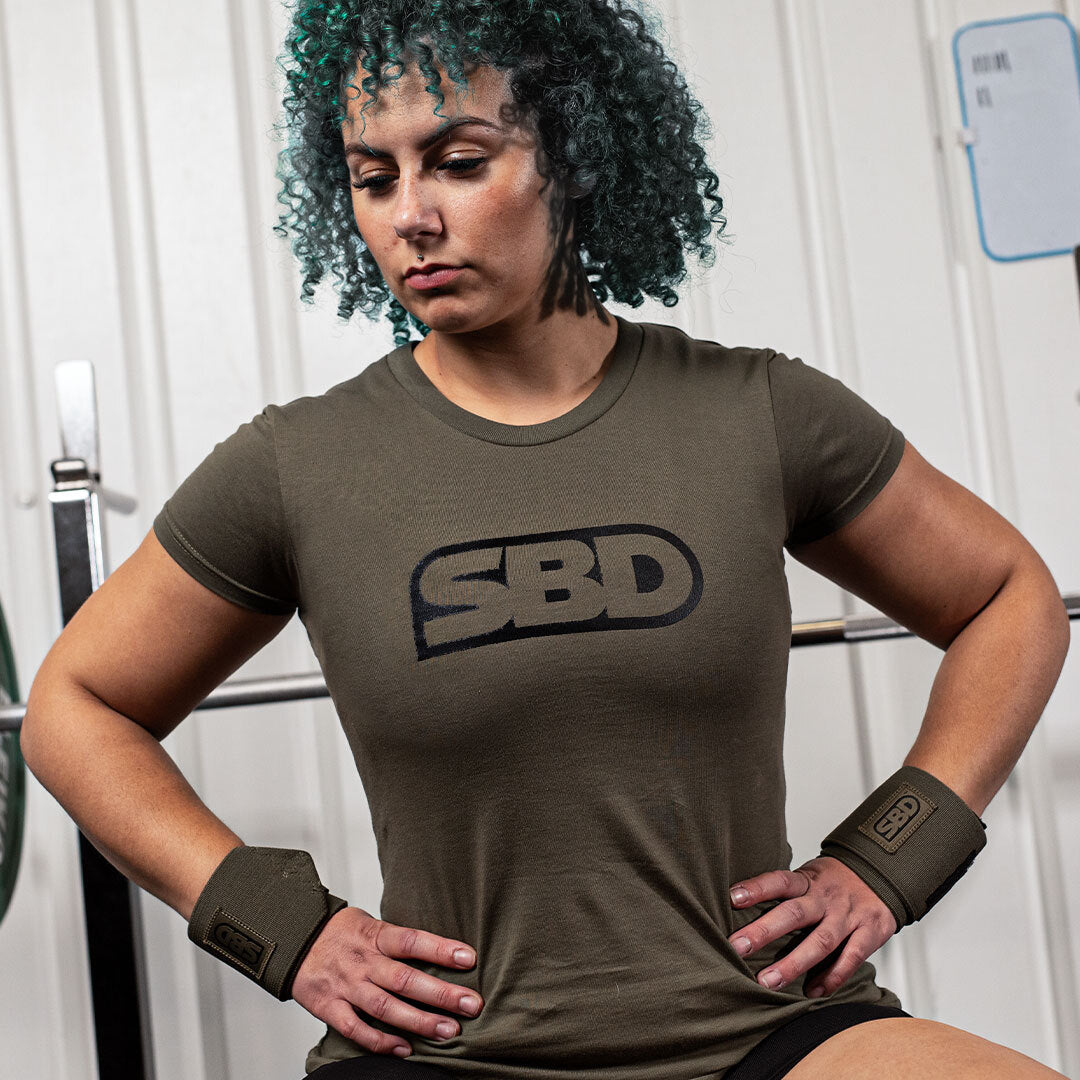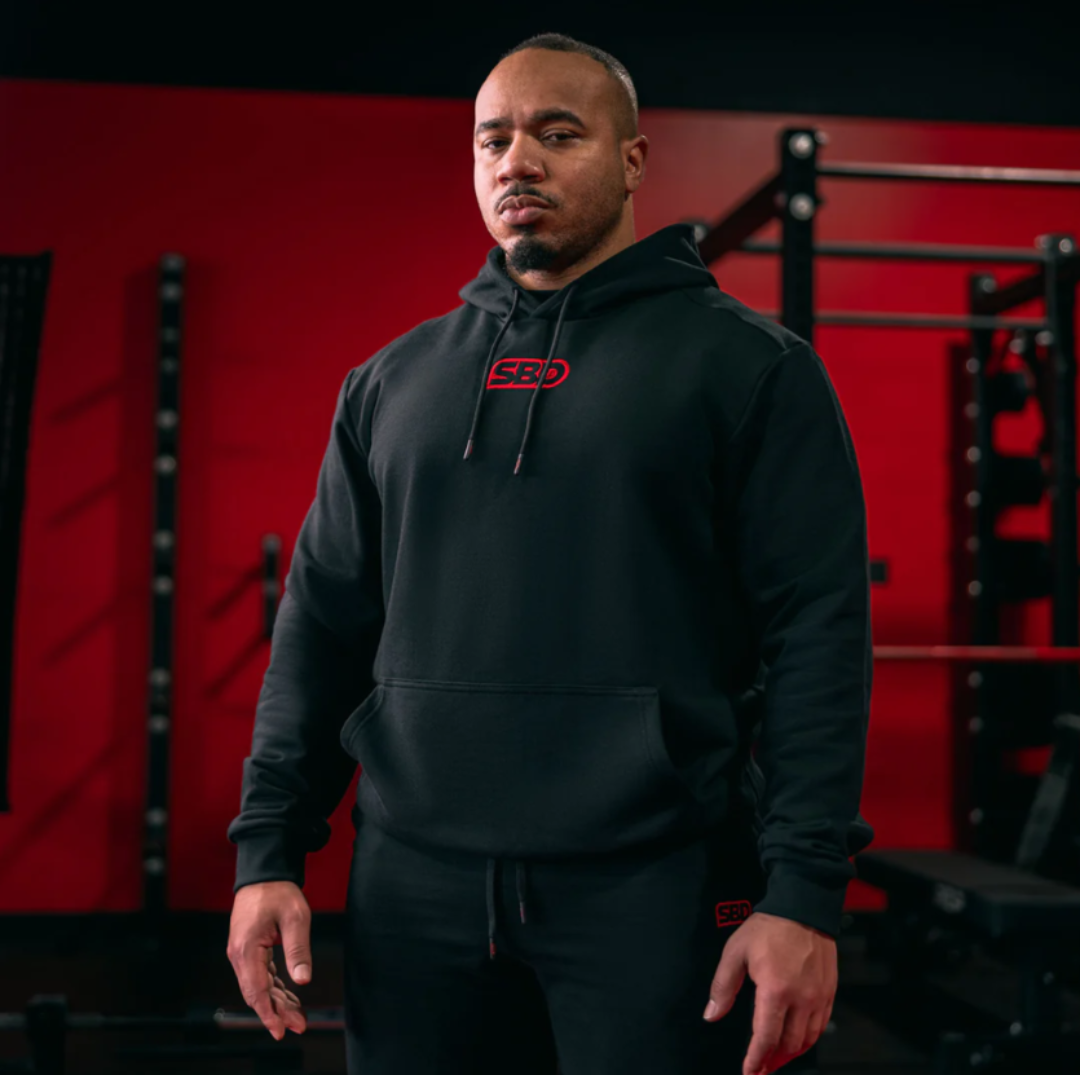When you're lifting heavy, your shoulders often bear the brunt of the strain. In this guide, we'll dive into practical and expert-backed ways to maintain your shoulder health while bench pressing heavy weights. Whether you’re a seasoned lifter or just starting out, keeping your shoulders in top form is key to maximising performance and preventing injury. Let's get right into it.
Understanding Shoulder Anatomy and Its Role in Bench Pressing
Your shoulder is one of the most versatile joints in your body, allowing a wide range of movement while providing stability for heavy lifting. In this section, we’ll explore the intricate structure of the shoulder and explain why understanding its anatomy is crucial for anyone engaged in bench pressing heavy weights.
The shoulder is a complex joint comprising bones, muscles, tendons, and ligaments that work together seamlessly. The primary bones include the clavicle (collarbone), scapula (shoulder blade), and the humerus (upper arm bone). These form the shoulder girdle, providing both support and mobility. The joint is inherently unstable by design, which permits a greater range of motion but also necessitates robust muscular support.
Key Muscles Involved
The shoulder’s stability largely depends on the muscles that surround it. The rotator cuff is a group of four muscles—supraspinatus, infraspinatus, teres minor, and subscapularis—that stabilise the shoulder joint by holding the head of the humerus securely within the shallow socket of the scapula. Alongside these, the deltoid muscle plays a major role, contributing to the shoulder’s rounded appearance and facilitating movement in multiple directions. Additionally, muscles like the trapezius and pectoralis major help support and control shoulder movement during bench pressing.
To better understand these components, consider the table below:
| Muscle Group | Primary Function | Role in Bench Pressing |
|---|---|---|
| Rotator Cuff | Stabilises the shoulder joint | Prevents dislocation and excessive movement |
| Deltoid | Abducts and rotates the arm | Assists in lifting and controlling the weight |
| Pectoralis Major | Adducts and rotates the arm | Drives the pressing motion, engaging shoulder muscles |
| Trapezius | Elevates, retracts, and rotates the scapula | Maintains proper shoulder positioning during lifts |
Understanding these muscle groups is vital because they work in harmony to produce a controlled movement during the bench press. A slight imbalance or weakness in one of these muscles can compromise shoulder stability, leading to potential injuries. For instance, if your rotator cuff isn’t strong enough to stabilise the humerus, you might experience strains or tears when pushing heavy weights.
Biomechanics and Movement
During a bench press, your shoulder undergoes a complex series of movements. As you lower the bar, your shoulder joints must decelerate the weight smoothly, engaging stabiliser muscles to avoid excessive strain. When you push the bar upwards, the muscles work in unison to propel the weight, all while maintaining a safe and efficient range of motion. It’s essential to recognise that the dynamic nature of this exercise places significant demand on your shoulder health.
Every phase of the lift—from the initial descent to the final push—requires precise coordination between muscle groups. An imbalance or fatigue in any component can disrupt this harmony, increasing the risk of injury. That’s why many experts stress the importance of not only training for strength but also focusing on mobility and flexibility. Incorporating targeted exercises that enhance the functional range of motion can go a long way in protecting your shoulders.
Moreover, the shoulder joint’s design makes it susceptible to overuse injuries, particularly when repetitively stressed under heavy loads. Lifters must remain vigilant about their technique and listen to their bodies. Regular assessments, stretching routines, and even periodic consultations with physiotherapists are invaluable for long-term shoulder health.
It’s also worth noting that individual differences—such as variations in shoulder structure and muscle balance—mean that a one-size-fits-all approach won’t do. What works for one lifter may not suit another, which is why personalised training and rehabilitation plans are becoming increasingly popular among athletes and fitness enthusiasts.
In summary, a thorough understanding of shoulder anatomy not only informs you about the vulnerabilities of your joints but also empowers you to take proactive steps in safeguarding them. Whether it’s through targeted exercises, mindful training practices, or simply an awareness of your body’s limits, appreciating the complexity of your shoulder can lead to better performance and fewer injuries. Remember, your shoulder health is the cornerstone of a successful and sustainable bench pressing routine.
The Importance of Shoulder Health in Heavy Bench Pressing
Maintaining robust shoulder health is absolutely crucial when you're pushing your limits with heavy weights. Not only does a well-maintained shoulder promote improved performance, but it also acts as a critical barrier against injuries that can derail your training. Let’s delve deeper into why your shoulder health should be a top priority.
When you bench press heavy weights, your shoulders experience immense stress. This pressure, if not managed properly, can lead to significant wear and tear over time. A healthy shoulder joint supports proper movement patterns and distributes the load evenly across various muscle groups. This balance is key to preventing overuse injuries, such as rotator cuff strains or impingement syndrome, which are common pitfalls for heavy lifters.
Enhancing Performance Through Stability
A stable shoulder allows you to generate more force and maintain proper form throughout your lift. When your shoulder muscles are strong and balanced, you benefit from increased control over the weight, leading to smoother and more efficient movements. This improved control not only enhances your bench press performance but also reduces the risk of erratic movements that can lead to injury.
For instance, during the eccentric phase (the lowering of the bar), a stable shoulder ensures that the force is distributed across multiple muscle groups rather than being isolated to one vulnerable area. This collective effort is what allows you to lift heavier weights safely. Incorporating shoulder-specific exercises into your routine—like internal and external rotations—can further fortify these muscles, thereby boosting your overall lifting performance.
Injury Prevention Benefits
Injuries can be a major setback, both physically and mentally, especially if you’re an avid lifter. Prioritising shoulder health can significantly reduce the likelihood of injuries. When your shoulders are in prime condition, they’re better equipped to handle the repetitive strain of heavy bench pressing. This not only ensures a longer, injury-free training career but also helps maintain consistency in your workout regimen.
Many lifters have found that integrating mobility exercises and dynamic stretches into their warm-up routines makes a world of difference. These practices help in priming the shoulder muscles and tendons for the rigours of a heavy lift. In turn, this preparation minimises the risk of sudden strains or tears. Moreover, regularly engaging in corrective exercises to address any imbalances can further safeguard your shoulders against the cumulative effects of heavy lifting.
Balancing Strength and Flexibility
It’s essential to strike a balance between building strength and preserving flexibility. While strength training is indispensable for boosting your bench press, overemphasising it without adequate stretching can lead to tight, inflexible muscles. Such rigidity might compromise your shoulder health over time. Therefore, integrating flexibility and mobility training is just as important as your heavy lifting sessions.
Many seasoned lifters advocate for a holistic approach that includes not just strength training but also regular sessions of yoga or Pilates. These activities promote flexibility, which in turn helps maintain a full range of motion in the shoulder joint. This balanced approach not only enhances your performance but also plays a crucial role in preventing injuries.
The Role of Recovery
Equally important to the workout itself is the recovery process. Rest and recuperation are vital for maintaining shoulder health, as they allow the muscles to repair and strengthen. Overtraining without proper recovery can lead to chronic shoulder issues, undermining all your hard work. Ensuring that you have adequate rest days, as well as employing recovery techniques such as foam rolling and targeted stretching, will pay dividends in the long run.
Ultimately, prioritising shoulder health means adopting a comprehensive approach that encompasses strength, flexibility, proper technique, and recovery. By doing so, you not only improve your bench press performance but also ensure that your shoulders remain resilient against the stresses of heavy lifting. It’s all about being smart with your training—listening to your body and making adjustments as needed to prevent injury and sustain long-term progress.
Common Shoulder Injuries and Prevention Strategies in Heavy Bench Pressing
Heavy bench pressing, though highly effective for building upper body strength, can sometimes lead to a range of shoulder injuries. Recognising the common issues and understanding how to prevent them is paramount for anyone serious about maintaining long-term shoulder health.
Rotator Cuff and Impingement Injuries
Among the most frequently encountered injuries in heavy lifters are rotator cuff strains and impingement syndromes. The rotator cuff, as we discussed earlier, comprises a group of muscles that stabilise the shoulder. When these muscles are overworked or not adequately warmed up, they can suffer from strains, tears, or inflammation. Impingement occurs when the tendons of the rotator cuff become compressed during movement, leading to pain and restricted mobility.
These injuries are often exacerbated by poor technique, excessive weight, or insufficient rest between training sessions. Many lifters inadvertently compromise their shoulder joint by neglecting proper form—such as flaring the elbows or failing to retract the scapula—thereby increasing the risk of injury.
Risk Factors and Warning Signs
It’s important to be aware of the early warning signs of shoulder injuries. Persistent pain, reduced range of motion, or discomfort during daily activities can indicate that your shoulder health is compromised. If you experience sharp pain during your bench press or notice that your shoulder feels weak or unstable, it might be a sign that you’re pushing your body beyond its limits. Recognising these symptoms early can help you take corrective action before the injury worsens.
Prevention Strategies
Preventing shoulder injuries starts with a commitment to proper technique and adequate warm-up routines. Here are some effective prevention strategies:
- Warm-Up Thoroughly: Begin each workout with dynamic stretches and mobility exercises specifically targeting the shoulder. This primes the muscles and tendons for the heavy load to come.
- Use Correct Form: Ensure your elbows remain slightly tucked and that your shoulder blades are retracted throughout the movement. This technique helps distribute the load evenly and reduces undue stress on any one part of the shoulder.
- Progress Gradually: Avoid sudden increases in weight. Instead, follow a structured progression plan that allows your shoulder muscles to adapt to heavier loads over time.
- Incorporate Rotator Cuff Exercises: Regularly perform exercises like external rotations, face pulls, and band pull-aparts to strengthen the often-neglected stabiliser muscles.
- Listen to Your Body: If you feel any discomfort or unusual pain, take a break. Pushing through pain can worsen an injury and prolong recovery time.
- Cross-Train: Engage in activities that promote overall shoulder mobility, such as yoga or Pilates, to maintain a balanced range of motion.
Implementing Recovery Protocols
In addition to these prevention strategies, recovery protocols play an essential role in maintaining shoulder health. Ice therapy, rest days, and physiotherapy sessions can help reduce inflammation and promote healing. For example, using a foam roller or massage stick on your shoulder muscles can alleviate tension and improve blood circulation.
Moreover, consider integrating corrective exercises that target muscle imbalances. A balanced training regimen not only focuses on the primary muscles but also the smaller stabilisers that support the shoulder joint. This holistic approach ensures that all parts of your shoulder are strong and resilient, reducing the likelihood of injury over the long term.
By incorporating these preventive measures into your routine, you can minimise the risk of shoulder injuries and maintain a sustainable bench pressing practice. Remember, prevention is always better than cure, and a few extra minutes spent on warm-ups and proper form can save you from weeks or even months of recovery later on.
Proper Bench Press Technique and Warm-Up Routines for Optimal Shoulder Safety
Achieving the perfect bench press isn’t just about raw strength—it’s also about technique, preparation, and a keen awareness of your body’s signals. In this section, we break down the ideal bench press technique and detail warm-up routines that help safeguard your shoulder health while handling heavy weights.
Bench Press Form Essentials
A proper bench press begins with setting up correctly on the bench. First, ensure that your feet are firmly planted on the ground and your back is slightly arched. This position helps distribute the weight evenly and minimises the strain on your shoulders. Next, focus on retracting your shoulder blades; this not only provides a stable base but also protects the rotator cuff from excessive pressure. Your grip on the bar should be firm, with your wrists aligned with your forearms to avoid unnecessary stress.
As you lower the bar towards your chest, control is key. Lower the weight slowly, ensuring that your elbows remain at an angle that doesn’t flare out excessively. Flaring the elbows can place undue pressure on the shoulder joint, potentially leading to injuries. Instead, keep your elbows at about a 45-degree angle relative to your torso, which supports both stability and a full range of motion. When pushing the bar back up, concentrate on engaging your chest and shoulder muscles evenly, and avoid locking out your elbows at the top of the lift.
Effective Warm-Up Routines
Before you even think about loading the bar, a proper warm-up is essential. A dynamic warm-up tailored to shoulder mobility not only prepares the muscles but also increases blood flow, making your shoulders more resilient to the upcoming strain. Here’s a step-by-step warm-up routine you can follow:
- Arm Circles: Start with 30 seconds of small to large arm circles to gently mobilise the shoulder joints.
- Band Pull-Aparts: Use a resistance band to perform 15–20 repetitions, which activates the muscles of the upper back and rear deltoids.
- Internal/External Rotations: With a light resistance band or dumbbell, perform 2 sets of 15 rotations on each side to engage the rotator cuff.
- Scapular Retractions: Sit or stand with your arms extended and squeeze your shoulder blades together for 10–15 repetitions.
- Dynamic Chest Opener: Gently swing your arms open and closed to stretch the chest and shoulder muscles.
These exercises help to gradually increase your heart rate and prime your muscles for the heavy work ahead. It’s crucial not to rush through these movements; taking a few extra minutes to prepare properly can make a significant difference in your shoulder safety and overall performance.
Integrating Technique with Warm-Up
Combining a solid warm-up with a focus on technique creates a safety net for your shoulders. After your dynamic warm-up, consider doing a couple of light sets of the bench press with minimal weight. This acts as a final rehearsal, allowing your body to adjust to the movement pattern before you add heavier loads. Remember, consistency is key. Adopting these practices not only enhances your lifting form but also embeds good habits that protect your shoulder health over the long haul.
Additional Tips for Optimal Safety
- Monitor Your Range of Motion: Avoid lowering the bar too far if it compromises your shoulder integrity. A controlled range of motion is better than risking an overstretched joint.
- Use Spotters When Needed: Having a training partner can help ensure you’re using proper form and provide immediate assistance should you encounter any difficulties.
- Regular Technique Reviews: Consider recording your lifts or seeking feedback from a coach to identify any form breakdowns that might put extra pressure on your shoulders.
By focusing on precise technique and incorporating a comprehensive warm-up routine, you can dramatically reduce the risk of shoulder injuries while bench pressing heavy weights. These practices not only optimise your performance but also foster long-term shoulder health, ensuring that you can continue lifting safely and effectively.
Accessory Exercises, Recovery Strategies, and Nutritional Support for Sustaining Shoulder Health
To truly sustain shoulder health while pushing heavy weights, you need a multifaceted approach that goes beyond the bench press. This section explores accessory exercises, recovery strategies, and nutritional tips designed to reinforce your shoulder’s resilience and performance.
Recommended Accessory Exercises
Supplementary exercises can significantly enhance your shoulder stability and strength. Here are some highly recommended accessory moves:
- Face Pulls: Excellent for targeting the rear deltoids and upper back, face pulls help balance the pressing movements.
- External Rotations: Using a resistance band or light dumbbells, these exercises isolate the rotator cuff, strengthening the stabilising muscles.
- Dumbbell Lateral Raises: These help build the medial deltoid and contribute to overall shoulder definition.
- Scapular Push-Ups: A variation of the standard push-up that emphasises scapular movement, promoting better shoulder control.
Integrating these exercises into your weekly routine can address muscle imbalances and reinforce the structures that support your heavy lifts.
Recovery and Rehabilitation Strategies
Recovery is just as important as the workout itself. Overtraining without proper recovery can lead to chronic shoulder issues. Here are some effective recovery strategies:
- Active Recovery: Incorporate light activities like walking or cycling on rest days to maintain blood flow without stressing your shoulders.
- Foam Rolling and Self-Massage: Regular self-myofascial release helps alleviate muscle tightness and enhances circulation, speeding up recovery.
- Stretching: Incorporate static and dynamic stretches focusing on the shoulders and upper back. Consistent stretching can improve flexibility and reduce tension.
- Adequate Rest: Ensure you’re getting enough sleep each night and allow your muscles time to repair between intense sessions.
Nutritional Support for Joint and Muscle Health
Your diet plays a pivotal role in maintaining shoulder health. Consuming nutrient-rich foods can help reduce inflammation and support muscle recovery. Focus on:
- Protein-Rich Foods: Lean meats, fish, legumes, and dairy products help rebuild muscle fibres after strenuous workouts.
- Anti-Inflammatory Foods: Incorporate plenty of fruits, vegetables, and omega-3-rich foods like salmon and walnuts to combat inflammation.
- Hydration: Staying well-hydrated is essential for joint lubrication and overall muscle function.
- Supplements: Some athletes find that supplements like Omega-3 fatty acids, glucosamine, and vitamin D can offer additional support for joint health.
Combining Recovery, Nutrition, and Accessory Work
The synergy between accessory exercises, proper recovery, and nutritional support is what truly sustains shoulder health. By addressing all these aspects, you not only prevent injuries but also enhance your overall performance. It’s about creating a balanced regimen where every element supports the others. For instance, effective recovery techniques can amplify the benefits of accessory exercises, while proper nutrition ensures that your muscles have the raw materials needed for repair and growth.
Long-Term Benefits
Adopting these strategies will yield long-term benefits beyond just injury prevention. A well-rounded approach will lead to improved shoulder stability, increased lifting performance, and a reduced likelihood of setbacks. Over time, as your shoulder health improves, you may find that you can push heavier weights with greater confidence and efficiency. Moreover, maintaining shoulder health is not only beneficial for your gym performance—it also enhances everyday activities, ensuring that you stay active and injury-free off the bench as well.
In summary, to maintain optimal shoulder health while bench pressing heavy weights, it’s crucial to embrace a comprehensive routine that includes targeted accessory exercises, effective recovery strategies, and proper nutritional support. This holistic approach not only safeguards your shoulders but also contributes to overall fitness and longevity in your training career.
FAQs
Q1: How often should I perform shoulder-specific warm-up exercises?
It’s best to incorporate dynamic warm-up exercises into every session. A brief 10- to 15-minute routine that includes arm circles, band pull-aparts, and internal/external rotations can significantly reduce injury risk.
Q2: What are the most common shoulder injuries associated with heavy bench pressing?
The most frequent injuries include rotator cuff strains, impingement syndrome, and labral tears. These often result from poor form, inadequate warm-ups, or overtraining.
Q3: Can accessory exercises really improve my bench press performance?
Absolutely. Accessory exercises like face pulls, lateral raises, and scapular push-ups help strengthen stabiliser muscles, which in turn supports better technique and improved overall performance.
Q4: How important is recovery in maintaining shoulder health?
Recovery is crucial. Without proper rest, stretching, and self-massage, your shoulders may suffer from chronic tightness and fatigue, leading to injuries. Incorporate active recovery and ensure you get enough sleep.
Q5: Are there any dietary changes I can make to support shoulder health?
Yes, a balanced diet rich in lean proteins, anti-inflammatory foods, and proper hydration can help reduce inflammation and support muscle repair. Supplements like Omega-3 fatty acids may also be beneficial.
Q6: How can I tell if I’m overtraining my shoulders?
Warning signs include persistent pain, decreased range of motion, and unusual fatigue. If you experience these symptoms, consider reducing your training intensity and consult a professional for tailored advice.
Conclusion
In conclusion, maintaining shoulder health is indispensable for anyone engaged in heavy bench pressing. By understanding your shoulder’s anatomy, prioritising proper technique, integrating effective warm-ups, and adopting a balanced approach to training and recovery, you can lift heavy safely and sustainably. Remember, smart training and proactive care today pave the way for long-term strength and injury-free progress.

